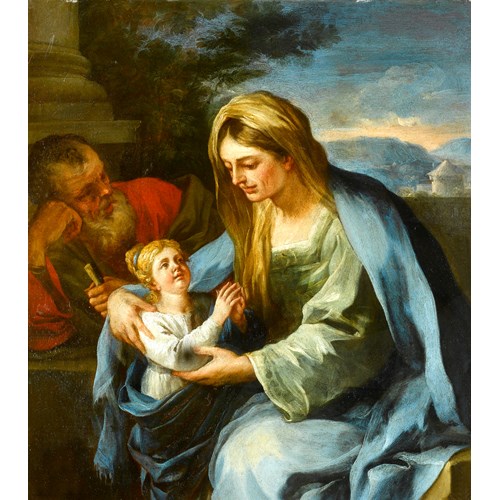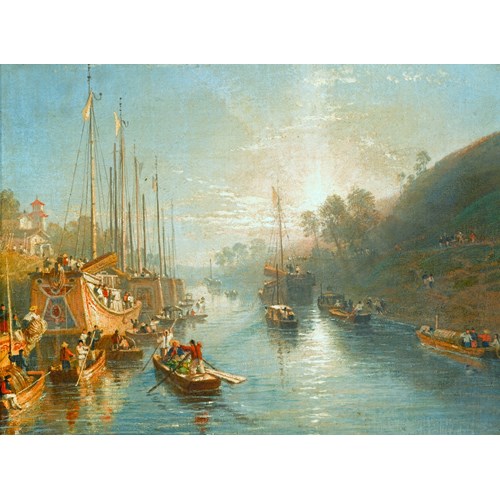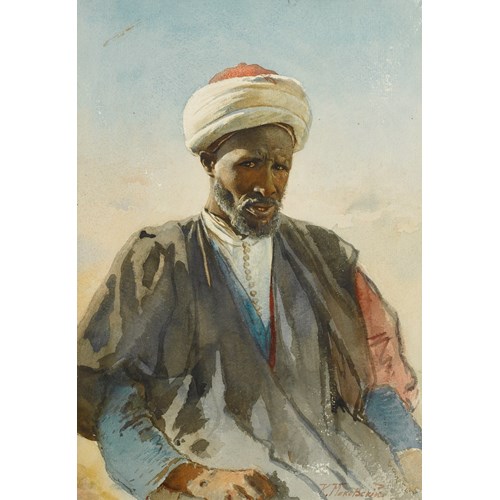Jacob Toorenvliet
An Allegory of the Arts, or ‘Painting being Crowned by Poetry’
Period 1600-1750, 17th century
Origin The Netherlands
Medium Oil on oak panel
Dimension 39.2 x 29 cm (15³/₈ x 11³/₈ inches)
According to Susanne Karau, only six of Toorenvliet’s works are allegories, of which only other depicts Painting being crowned by Poetry.¹ The work provides a fascinating insight into historical attitudes toward painting as an art form, and is a subject which Toorenvliet returned to on several occasions. In the Middle-Ages painters were considered craftsmen rather than artists. However, in his Ars Poetica, the Roman poet Horace had equated poetry and painting, saying ‘ut pictura poesis’ (as a painting, so should a poem be), which suggests that poetry and painting were equal because both create, through the exercise of the imagination. As Barker, Webb and Woods have written, Horace’s text was useful to art theorists who sought to promote the status of painting, since poetry was a branch of rhetoric, one of the three great liberal arts of classical antiquity.² This attitude was articulated by Cennino Cennini, who wrote ‘And justly it [painting] deserves to be enthroned just below philosophy, and to be crowned with poetry’.³ In the present painting we see Toorenvliet depict these sentiments, as the figure of Poetry, acknowledges the value and importance of Painting as a liberal art.
Toorenvliet was born Leiden, the eldest son of Abraham Toorenvliet (1620-1692), a glass painter and drawing instructor. Although it is thought that he received some training from his father, Jacob received the bulk of his artistic education from Gerrit Dou (1613-1675), which he probably finished towards the end of the 1650s. Toorenvliet led an active life, working in a number of cities throughout his career, mainly throughout Italy and the Netherlands. However, he continued to return to his native Leiden throughout his life and seems to have settled there permanently in by 1686.
Toorenvliet’s work is rooted in the traditions of the Leiden school of painting. The so-called fijnschilders, or ‘fine-painters’, specialised in scenes full of minute detail, executed in a highly polished style. Toorenvliet’s teacher, Dou, was the biggest influence on the style, and artists such as Toorenvliet and Frans van Mieris the Elder (1635-1681), were among its most successful practitioners. The fijnschilders generally focused on genre scenes, however, as can be seen in the present work, Toorenvliet was more expansive, both in his subject matter and style. He incorporated elements from other schools and artists in his work, but combined these with his own inventions, resulting in a highly individual and unique style, of which An Allegory of the Arts, or ‘Painting being Crowned by Poetry’, is an excellent example.
¹ Karau, S. H., Leben und Werk des Leidener Malers Jacob Toorenvliet (1640-1719), Ph.d. diss., Freie Universitat, Berlin, 2002, vol. 1; p.134.
² The Changing Status of the Artist, ed. Barker, E., Webb, N. & Woods, K. (Yale University Press, 1999), p.19.
³ Cennino d’Andrea Cennini, The Craftsman’s Handbook: The Italian “Il Libro dell’ Arte”, trans. D. V. Thompson Jr. (New York, 1960), pp. 1-2.
Period: 1600-1750, 17th century
Origin: The Netherlands
Medium: Oil on oak panel
Dimension: 39.2 x 29 cm (15³/₈ x 11³/₈ inches)
Provenance: Anonymous sale, Amsterdam, Christie’s, 22 October 1979, lot 476;
anonymous sale, Amsterdam, Sotheby’s, 22 November 1989, lot 106 (unsold);
With Galerie Gabriels, The Hague, 1997.
Literature: J. Briels, Peintres Flamands au Berceau du Siècle d’Or Hollandais 1585-1630 (Antwerp 1997), reproduced in colour on the cover and frontispiece.
Susanne H. Karau, Leben und Werk des Leidener Malers Jacob Toorenvliet (1640-1719), Ph.D. diss., Freie Universitat, Berlin, 2002, vol. 1; p.134, vol. 2; p. 46, no. B14 & p. 70 (illustrated).
More artworks from the Gallery









